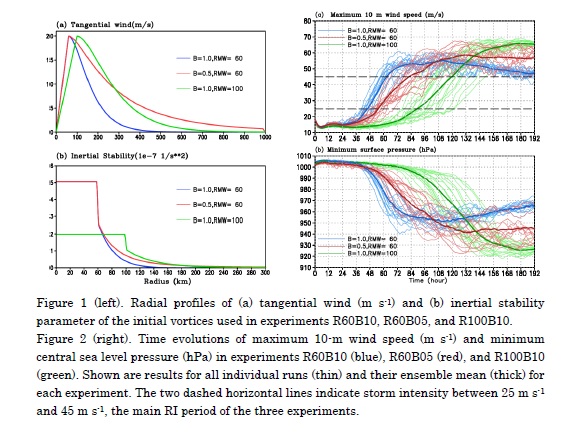Graphical Abstract
Xu, J., and Y. Wang, 2018: Effect of the initial vortex structure on intensification of a numerically simulated tropical cyclone. J. Meteor. Soc. Japan, 96, 111-126.
https://doi.org/10.2151/jmsj.2018-014
Graphical Abstract with highlights
Highlights:
- the initial spinup period is shorter and the subsequent IR is larger for the storm with the initially smaller RMW or with the initially more rapid radial decay of tangential wind outside the RMW;
- the longevity of the initial spinup period is determined by how quickly the inner-core region becomes nearly saturated in the middle and lower troposphere and thus deep convection near the RMW is initiated and organized. Because of the larger volume and weaker Ekman pumping, the inner-core of the initially larger vortex takes longer time to become saturated and thus experiences a longer initial spinup period;
- the vortex initially with the larger RMW (with the slower radial decay of tangential wind outside the RMW) has lower inertial stability inside the RMW (higher inertial stability outside the RMW) develops more active convection in the outer-core region and weaker boundary-layer inflow in the inner-core region and thus experiences lower IR during the primary intensification stage.
The effect of the initial vortex structure, including the radius of maximum wind (RMW) and the radial decay rate of tangential wind outside the RMW, on the intensification rate (IR) of a tropical cyclone (TC) is studied based on ensemble of simulations using a nonhydrostatic axisymmetric cloud-resolving model. The results show that:







